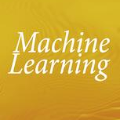In recent years, machine learning has received increased interest both as an academic research field and as a solution for real-world business problems. However, the deployment of machine learning models in production systems can present a number of issues and concerns. This survey reviews published reports of deploying machine learning solutions in a variety of use cases, industries and applications and extracts practical considerations corresponding to stages of the machine learning deployment workflow. Our survey shows that practitioners face challenges at each stage of the deployment. The goal of this paper is to layout a research agenda to explore approaches addressing these challenges.
翻译:近年来,机器学习作为一个学术研究领域和作为现实世界商业问题的解决办法,引起了越来越多的人的兴趣,然而,在生产系统中部署机器学习模式可以提出若干问题和关切,本调查审查了在各种使用案例、行业和应用中部署机器学习解决办法的报告,并摘录了与机器学习部署工作流程各个阶段相应的实际考虑。我们的调查表明,从业人员在每一个部署阶段都面临挑战。本文件的目的是设计一个研究议程,探讨应对这些挑战的方法。




